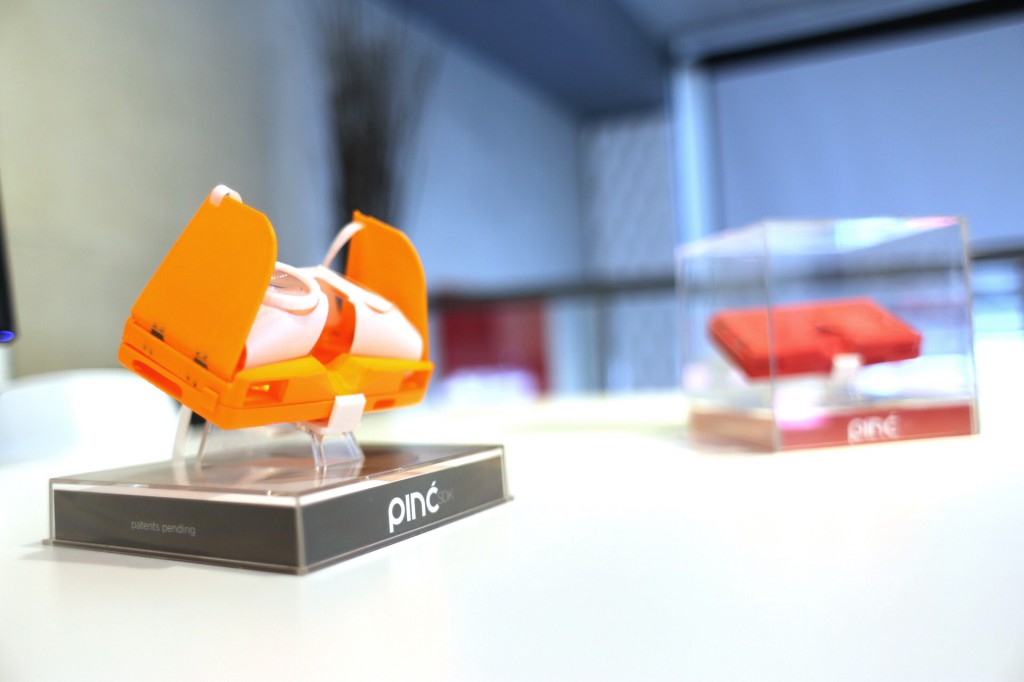
Milan Baic wants me to know that Cordon Media is not a hardware company. Founding Cordon as a digital agency in 2008, Baic helped the company become known in Canada for its Flash-based interactive experiences, starting first on the web and then expanding to large installation work.
But when the mobile revolution hit, Flash died, and the creative canvas for digital agencies started getting smaller and smaller. Cordon no longer had a platform to deliver its interactive experiences, and wanted to do so on a wide scale. The recent popularity of the Oculus Rift made Cordon look at VR seriously, but the platform wasn’t quite the right fit, with its focus on gaming and specific hardware requirements.
“We got tired of being limited to platforms we thought could be a lot better,” Baic said.
“VR is the perfect product for a spatial experience, but you want to touch and feel. You want to grab.”
So in June of 2014, members of Cordon got together to brainstorm a passion project: help VR go mainstream by expanding on the capabilities of the mobile phones we all carry in our pockets. Six months later, the company has launched an Indiegogo campaign for a $99 mobile case that turns your iPhone 6 and 6 Plus into a VR headset.
Cordon might not be a hardware company, but the company’s history with large-scale installation work has given it a deep respect for strong industrial design. Leveraging 3D printing and proven materials from other industries (swimwear straps and off-the-shelf lenses), Pinć functions similarly to Google’s Cardboard, but folds back into a case only 20mm thick. Although in its early stages (build material for the launch version have yet to be finalized), the design is clearly innovative, and solves the problem of carrying around bulky headsets just in case an urge to enter virtual reality hits. “We thought a lot about building something that was sticky and invisible,” Baic told me.
But Pinć is more than a VR case/headset. Pinć leverages the iPhone 6 and 6 plus cameras to add AR support, and the device also pairs with Cordon’s patent-pending optical control system: two rings which rest on your index fingers to track hand location and gestures in a very Minority Report way. The mechanism stemmed from frustrations with VR headsets like Oculus, which are currently built for traditional control inputs like game controllers.
“VR is the perfect product for a spatial experience, but you want to touch and feel. You want to grab,” Baic said.
But Pinć is similar to Oculus and other VR competitors in that it will require developer support to be anything more than a novel piece of hardware. To that end, Cordon will be releasing an SDK early in 2015 to help developers get building. The SDK itself is in fact a Unity-based extension, which should make Pinć support both easy and appealing to a broad swath of developers.
Cordon is hoping to release production worthy versions of Pinć shortly after in the summer. The company plans to use the $250,000 crowdfunding goal on additional software development and hardware production, but Baic indicated that the real goal of the Indiegogo campaign was to rally community support.
“We wanted to focus on our strengths and minimize the electronics to keep the cost and barrier to entry low,” he said. “Then leave it up to the developer community to do the rest.”
MobileSyrup may earn a commission from purchases made via our links, which helps fund the journalism we provide free on our website. These links do not influence our editorial content. Support us here.


